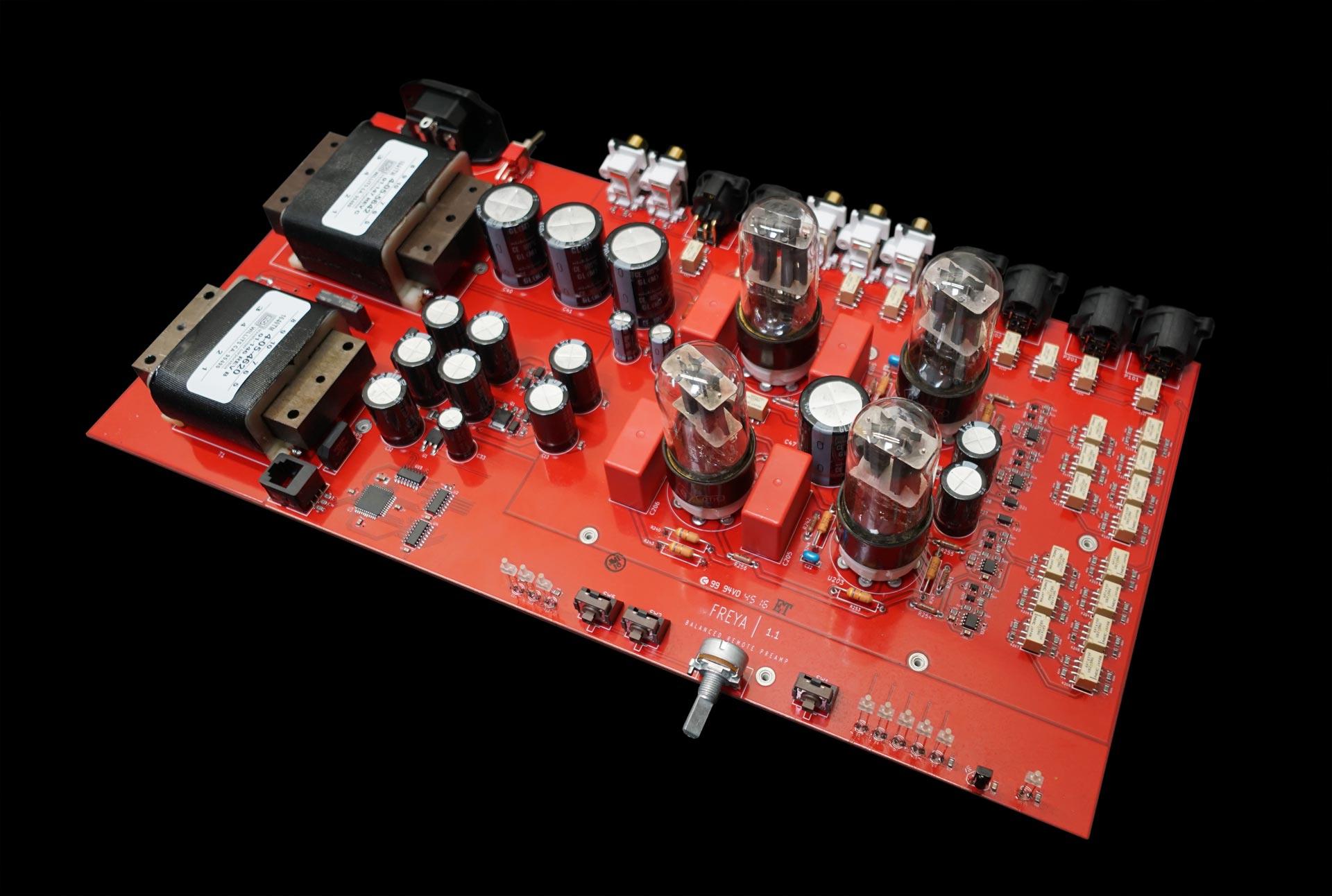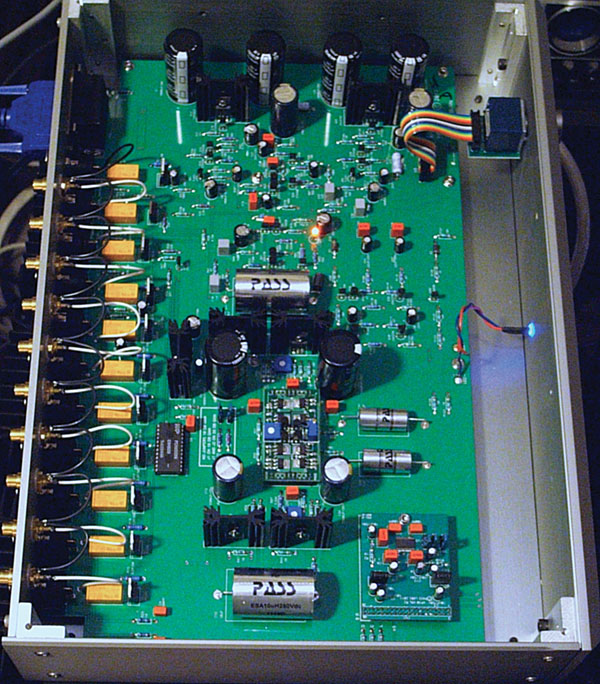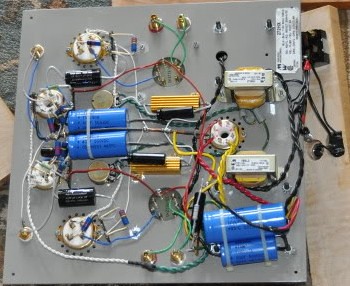Internal jack design in high end electronics - small wires vs. solid metal

Clipdat
Posts: 13,089
Hope my thread title is accurate. Trying to get some understanding/insight into how/why manufacturers choose to implement the internal RCA connections.
It seems that some tend to use an "integrated" type approach and use bare metal leads with or without a plastic holder/bracket, such as these:
Schiit Freya:

Krell KSL:

Music Hall a15.3

While other manufactures choose to use what appears to be a thin ~18ga wire to connect the RCA ports to the circuit board:
Project Pre-Box RS:

Rogue Audio Stealth phono preamp:

Pass XP-30:

Emotiva ERC-3:

Any reason for the design differences between the various manufacturers? In my uneducated opinion, I would tend to think that the "integrated" designs that don't use small thin gauge wires are "better". With the rationale being why are the wires so plain/thin internally, but then we are highly recommended to use a super expensive thick RCA interconnect at sometimes hundreds of dollars per meter to connect them to our other components.
Would like to hear any and all thoughts on this topic!
It seems that some tend to use an "integrated" type approach and use bare metal leads with or without a plastic holder/bracket, such as these:
Schiit Freya:

Krell KSL:

Music Hall a15.3

While other manufactures choose to use what appears to be a thin ~18ga wire to connect the RCA ports to the circuit board:
Project Pre-Box RS:

Rogue Audio Stealth phono preamp:

Pass XP-30:

Emotiva ERC-3:

Any reason for the design differences between the various manufacturers? In my uneducated opinion, I would tend to think that the "integrated" designs that don't use small thin gauge wires are "better". With the rationale being why are the wires so plain/thin internally, but then we are highly recommended to use a super expensive thick RCA interconnect at sometimes hundreds of dollars per meter to connect them to our other components.
Would like to hear any and all thoughts on this topic!
Comments
-
Electrically (and sonicly) I doubt there is much if any difference, assuming quality materials are used.
That said, I strongly prefer chassis mounted recepticals, connected to the PCB via flexible wires. The reason being, if there is any flex with the mounted RCA, it will be transfers to the PCB via a solid connection. Flex on a PCB is never a good thing. A wired connection isolates the PCB from any flexing of the surface the jacks are mounted to.
I understand that some equipment is so solidly built that this is not a concern, but it remains a concern for the vast majority of equipment.“Human beings are born with different capacities. If they are free, they are not equal. And if they are equal, they are not free.”
― Aleksandr Solzhenitsyn -
Well -- in cases in which printed circuit boards (a/k/a "PCBs", though not to be confused with polychlorinated biphenyls!) aren't used, "hard wired" connectors are pretty much required

This being said (and not as facetiously as it may seem), the modular connectors that solder direct to PCBs are pretty much "standard goods" and almost vanishingly cheap when bought in quantity. Dimensions are standardized; automated assembly is practical -- it's the lowest-cost way for a manufacturer to implement unbalanced ("RCA" jacks). Now, this isn't necessarily a bad thing; some designers may invest more in other things that they think is more important to the 'bottom line' performance than the jacks.
I also don't mean to imply that all modular, solder-in jacks are cheap in quality -- I am sure they're not. But they're still "mass production" items, which brings some economy of scale for a manufacturer buying them as parts for assembly.
As to hard wired jacks -- there's a substantial labor cost involved in fabricating and installing either twisted pairs of wires or coax cable to connect the jacks to the circuitry. I would be pretty certain that the hard-wire approach increases the 'COGs' (cost of goods sold) for a designer/manufacture who goes that route. As I glibly mentioned above, if the 'active' circuitry is all point-to-point wired, the hard-wire route is pretty much required.
There's another design principle at play (FWIW), I think -- it's generally considered a "good practice" to minimize exposure of the signal (especially the lowest-level signals) to major sources of noise (the major-ist one being the power supply). One would presume that the designers of all of the equipment in the first post in this thread are mindful of that!
... sorry for the verbose post! -
(I actually decided to remove this bit from the response above -- but I will still leave it here. It's not quite on-topic, but it's not unrelated, either.
 )
)
PCBs themselves represent, I would opine, a pretty significant compromise in and of themselves. They're inexpensive and consistent (mass-producable), and they enable simple (again, even automated) assembly and relatively easy servicing. The downside is that there's essentially no way to "shield" the signal on PCB traces -- no matter what kind of wiring connects the PCB to the outside world (input and output), the signal on the board is traveling in those little photo-etched, flat "traces". Some folks may question the prudence of putting the signal on PCBs (I - ahem - might be one of them, although I am not fundamentally anti-PCB ).
). simple2A3belowdeckscropped_zpsee9b13b5 by Mark Hardy, on Flickr
simple2A3belowdeckscropped_zpsee9b13b5 by Mark Hardy, on Flickr
point to point wiring in a build of the JE Labs "Simple 2A3" amplifier design,
http://jelabsarch.blogspot.com/2012/06/je-labs-simple-452a3.html
One may see another build of this amp in more or less real time at:
http://www.hifihaven.org/index.php?threads/je-labs-angela-simple-2a3-build.2473/ -
mhardy6647 wrote: »Well -- in cases in which printed circuit boards (a/k/a "PCBs", though not to be confused with polychlorinated biphenyls!)
... sorry for the verbose post!
I UNVERBOSED....your post.
I once climbed up a utility pole to check a transformer for PCB's, and I found these inside.

-
Personally I prefer chassis mount as well. Much more sturdy in my mind and easier to upgrade if you prefer
-
mhardy6647 wrote: »... the signal on the board is traveling in those little photo-etched, flat "traces". Some folks may question the prudence of putting the signal on PCBs...
It's a matter of distance and environment - if you get up in the middle of the night to urinate, walking to the bathroom in your underwear is a no brainer... going to the grocery store, not so much (unless you're @lightman1).
“Human beings are born with different capacities. If they are free, they are not equal. And if they are equal, they are not free.”
― Aleksandr Solzhenitsyn


